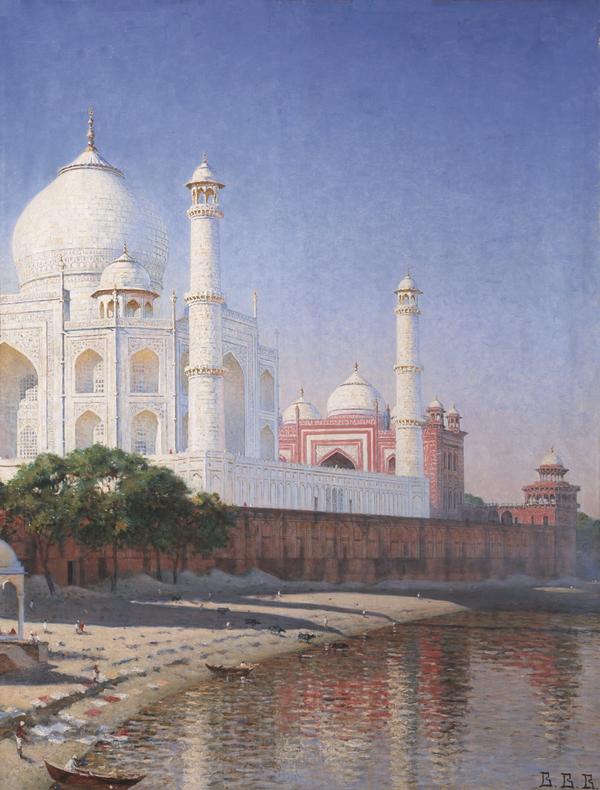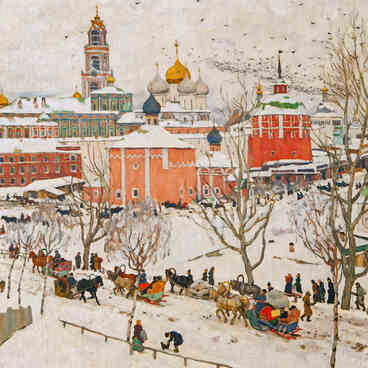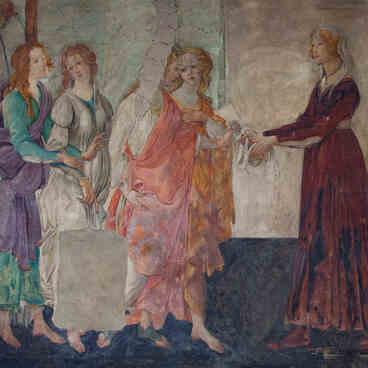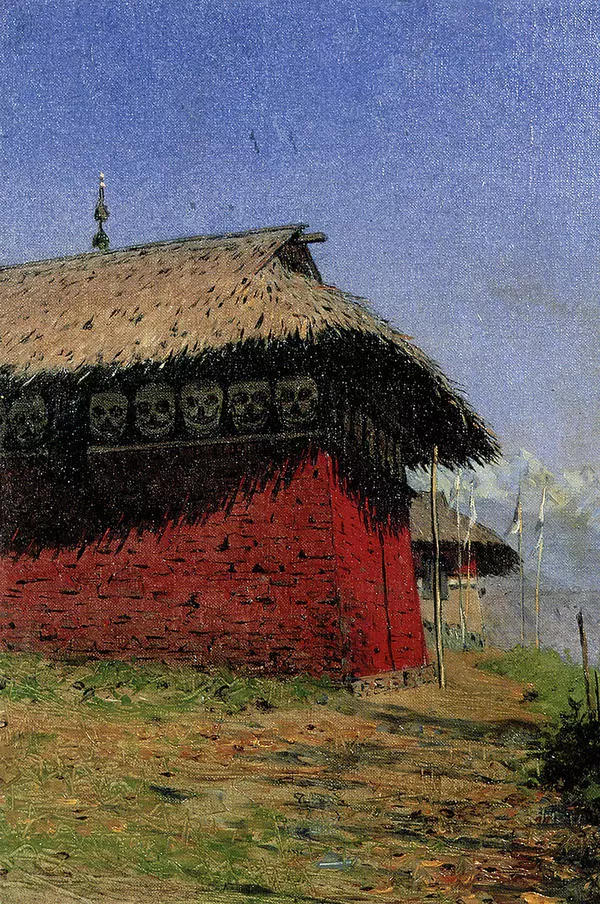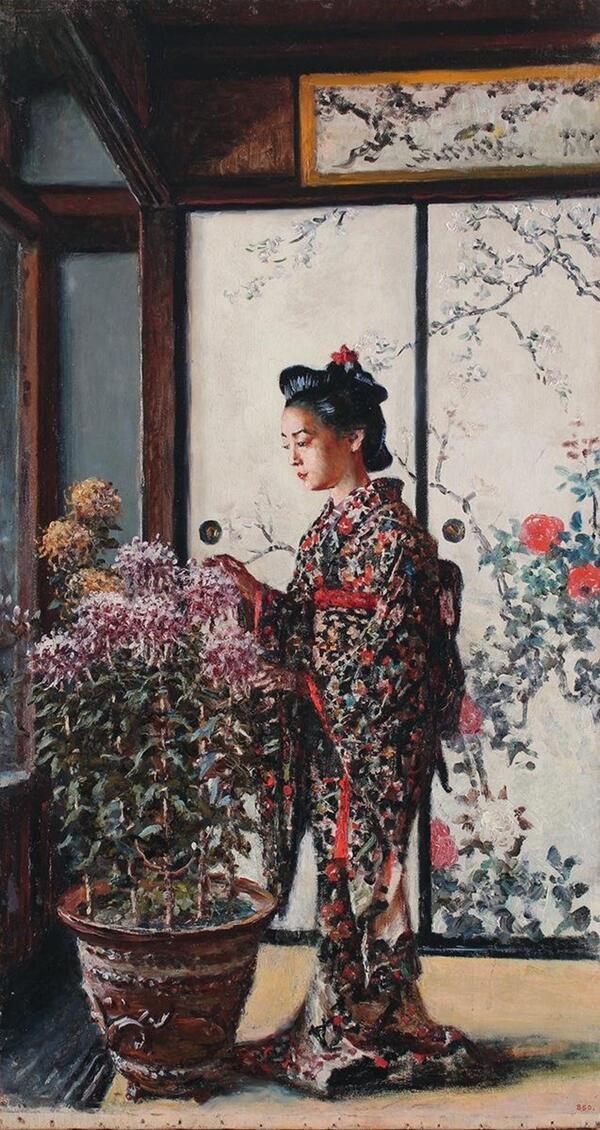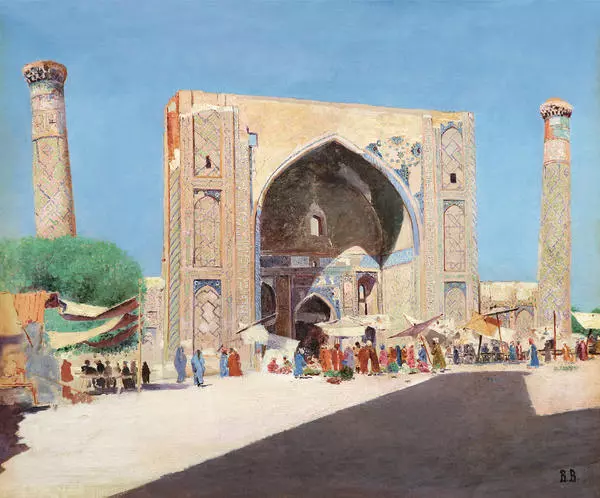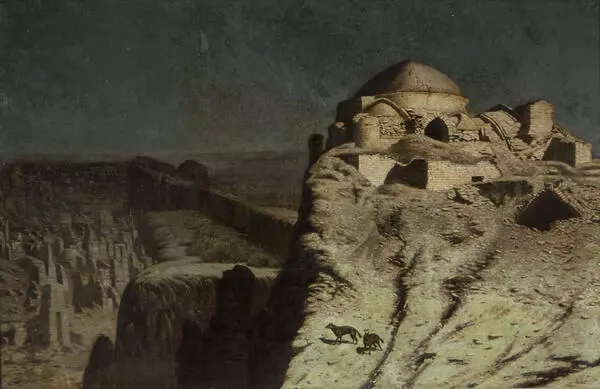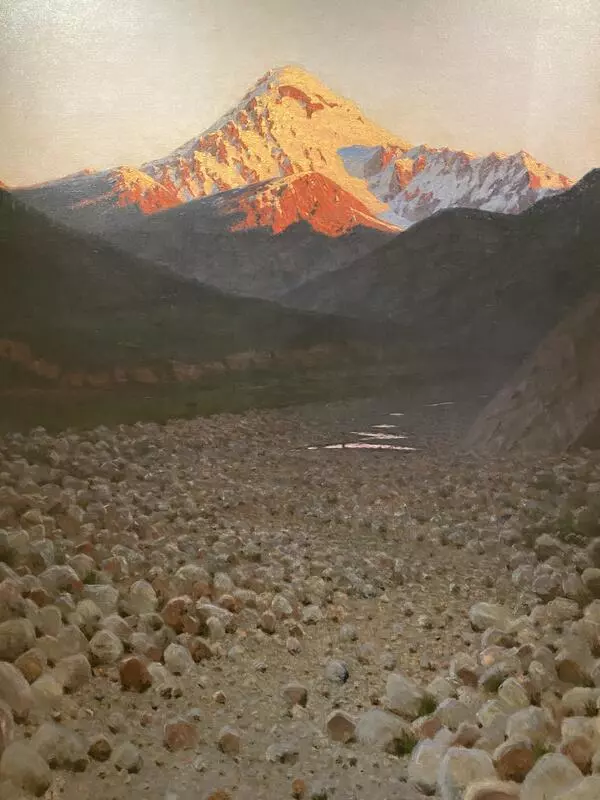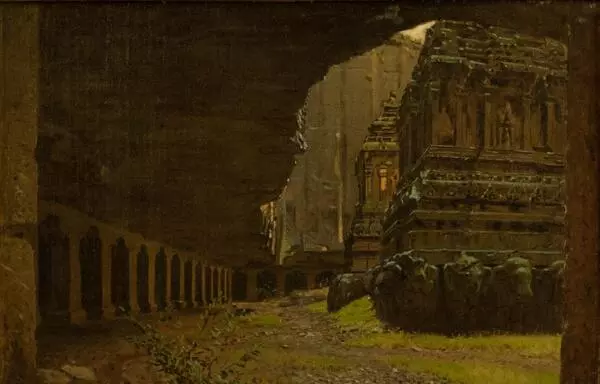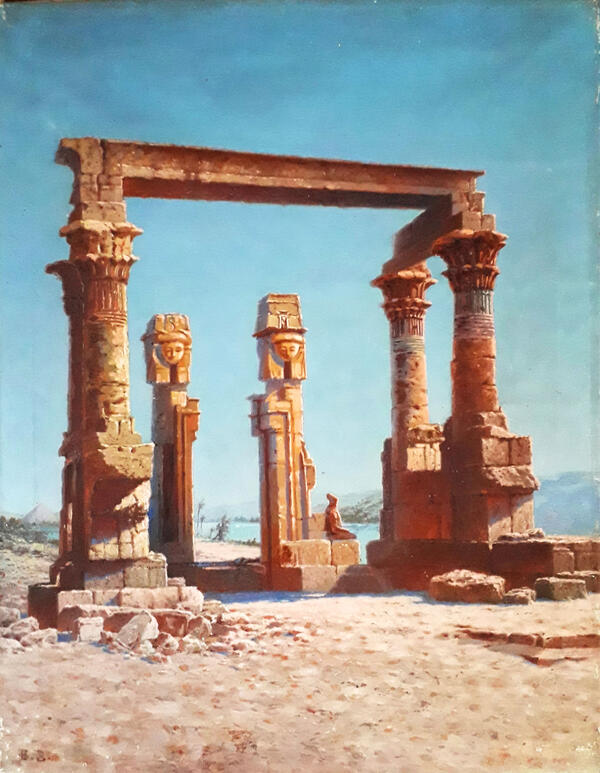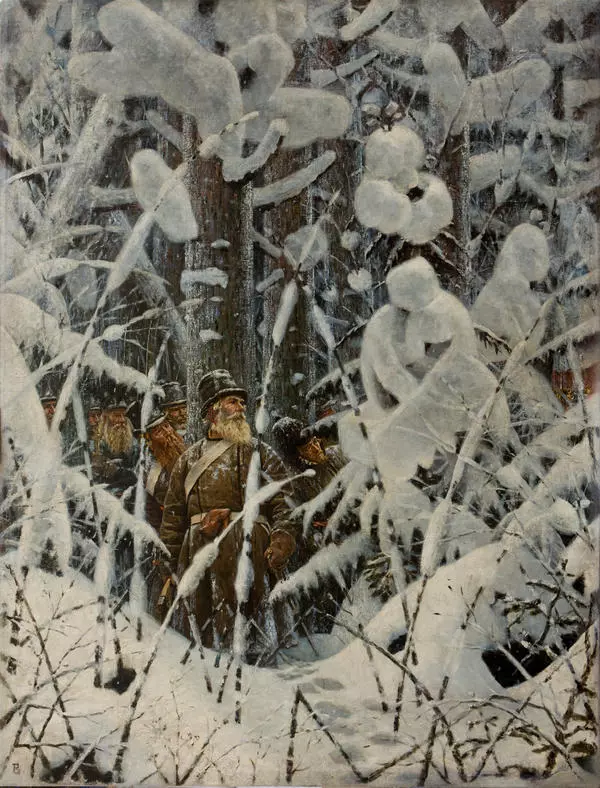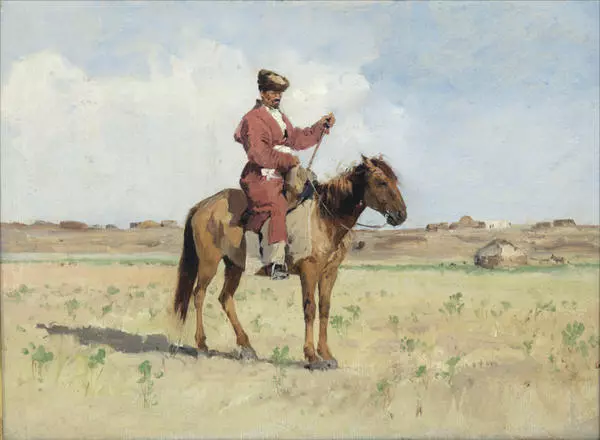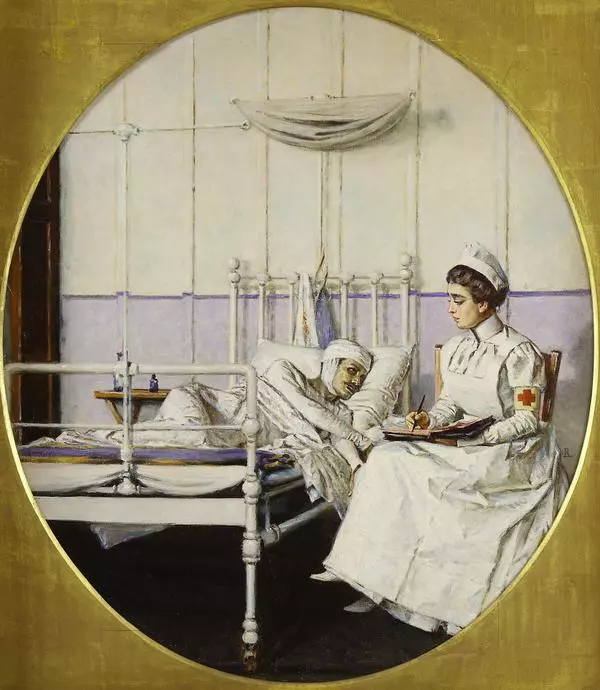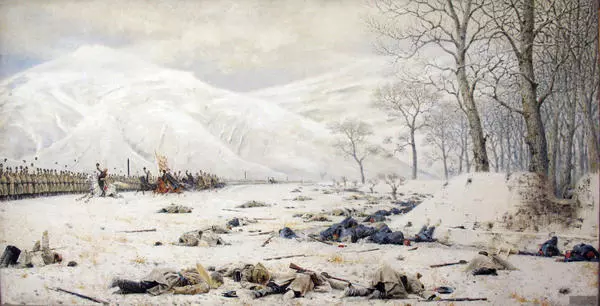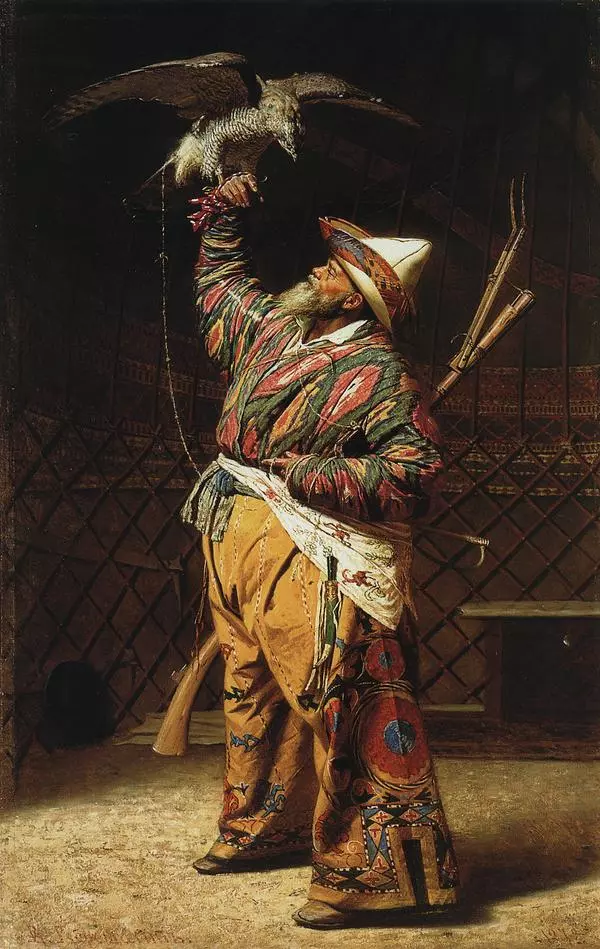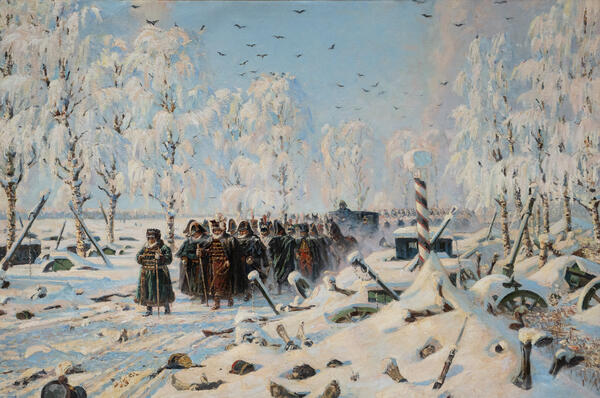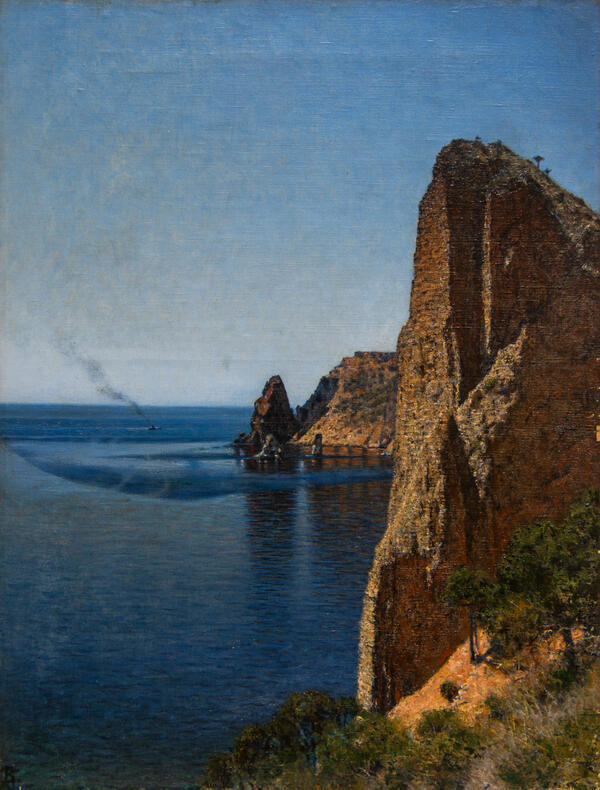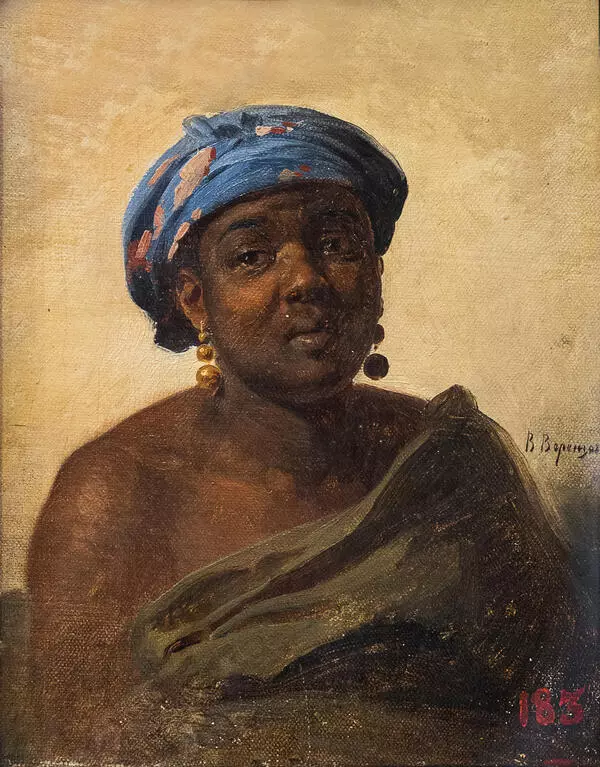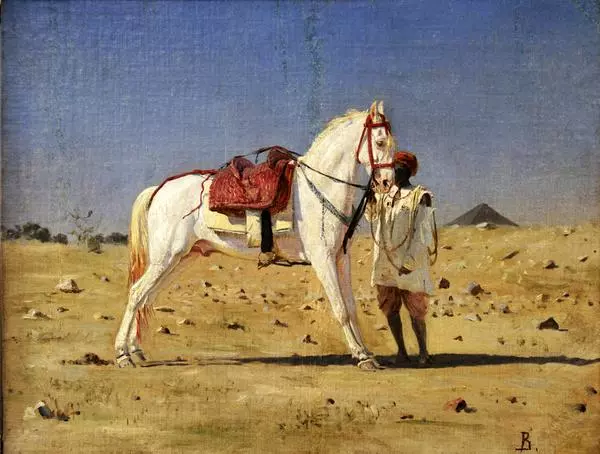Nikolai Semyonovich Golovanov loved traveling, so it is not surprising that he took a liking to the canvas, depicting a mausoleum in the vicinity of the Indian city of Agra on the bank of the Yamuna River. The painting “The Taj Mahal Mausoleum at Sunset” was created by Vasily Vasilyevich Vereshchagin.
Vasily Vereshchagin (1842–1904) was a Russian painter and one of the most famous battle painters. The future artist was born in Cherepovets into the family of a local marshal of nobility. There were 11 children in the family. In 1850, together with his brother, Vasily Vereshchagin entered the Cadet Corps of Emperor Alexander II; afterward, he also studied at the Naval Cadet Corps. At the end of his studies and after a brief service, midshipman Vereshchagin resigned and entered the Saint Petersburg Academy of Arts.
Vereshchagin is known for his extensive traveling in Eastern countries, especially India. During one of those travels, the artist was captivated by the architecture of the famous Taj Mahal. Most of Vereshchagin’s “Indian” works were created during his first trip to the country, which lasted from 1874 to 1876. The picture from Nikolai Golovanov’s collection was apparently painted much later than the rest in the artist’s studio in Paris.
The glory of the Taj Mahal is attributed not only to its beautiful architecture, but also to the legendary love story behind its creation. The mausoleum was built in the 17th century by Shah Jahan, the ruler of the Mughal Empire, in memory of his beloved wife, whose death plunged him into inconsolable grief. At the age of 15, Shah Jahan met and fell in love with Arjumand Banu Begum, the 14-year-old daughter of the Chief Minister. The beautiful and intelligent girl of noble birth was a great match for the prince, however, Shah Jahan was first supposed to marry a Persian princess for political purposes. As the laws of Islam allow a man to have up to four wives, Shah Jahan was able to marry his beloved in 1612. Soon after the wedding, Arjumand received a new name — Mumtaz Mahal.
In 1630, Mumtaz Mahal died in childbirth. In her last moments, Mumtaz Mahal asked Shah Jahan for two things: not to marry again and build a mausoleum for her, unequaled anywhere in the world. Shah Jahan kept his word and built a mausoleum called Taj Mahal, which means “the Crown of the Palace”.
Vasily Vereshchagin (1842–1904) was a Russian painter and one of the most famous battle painters. The future artist was born in Cherepovets into the family of a local marshal of nobility. There were 11 children in the family. In 1850, together with his brother, Vasily Vereshchagin entered the Cadet Corps of Emperor Alexander II; afterward, he also studied at the Naval Cadet Corps. At the end of his studies and after a brief service, midshipman Vereshchagin resigned and entered the Saint Petersburg Academy of Arts.
Vereshchagin is known for his extensive traveling in Eastern countries, especially India. During one of those travels, the artist was captivated by the architecture of the famous Taj Mahal. Most of Vereshchagin’s “Indian” works were created during his first trip to the country, which lasted from 1874 to 1876. The picture from Nikolai Golovanov’s collection was apparently painted much later than the rest in the artist’s studio in Paris.
The glory of the Taj Mahal is attributed not only to its beautiful architecture, but also to the legendary love story behind its creation. The mausoleum was built in the 17th century by Shah Jahan, the ruler of the Mughal Empire, in memory of his beloved wife, whose death plunged him into inconsolable grief. At the age of 15, Shah Jahan met and fell in love with Arjumand Banu Begum, the 14-year-old daughter of the Chief Minister. The beautiful and intelligent girl of noble birth was a great match for the prince, however, Shah Jahan was first supposed to marry a Persian princess for political purposes. As the laws of Islam allow a man to have up to four wives, Shah Jahan was able to marry his beloved in 1612. Soon after the wedding, Arjumand received a new name — Mumtaz Mahal.
In 1630, Mumtaz Mahal died in childbirth. In her last moments, Mumtaz Mahal asked Shah Jahan for two things: not to marry again and build a mausoleum for her, unequaled anywhere in the world. Shah Jahan kept his word and built a mausoleum called Taj Mahal, which means “the Crown of the Palace”.

